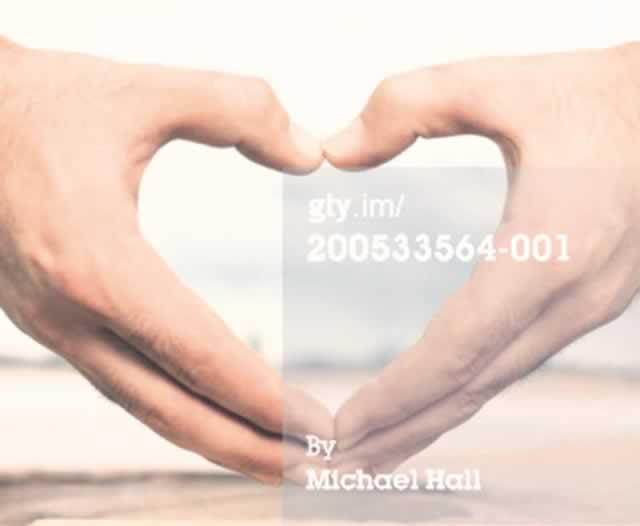Image banks and the Zimbabwean market


One of several heart stock images available on Getty Images. Image banking is now a multi-billion-dollar industry that has entirely transformed the world of media images
Knowledge Mushohwe Correspondent
Getty Images’ values fit in well with the new global corporate ideology, while negative characteristics in some photographs point at the possible risks to this ideology – greed, vanity, pride, indulgence, escapism and aggression.
Most of the images that find their way into magazines, newspapers, promotional material and advertisements are bought cheaply from web-based image banks like Getty Images, accessible to internet users all around the world. The images are technically of high quality and have bright lighting and flat or plain colours.
The images often depict attractive models are highly posed and set in nondescript locations to make them usable across the world. They do not represent actual places or events, but they symbolically represent market- able concepts and moods such as “happiness” and “unity”.
Image banks like Getty Images and Corbis stock many millions of images, which can raise revenue running into several hundreds of thousands of dollars each a year as they are licensed to designers and media organisations around the planet.
Many of them, under the “editorial” theme are archival images of key historical moments.
But the biggest earners are “creative” stock images such as that of an adorable child playing with a set of toys – images that do not record anything but evoke an idea or a feeling and can be used to add interest to textual pieces of information.
Some themes covered by Getty Images photographs include positive contexts such as togetherness, friendship, love and protection
A desire for knowledge and progress themes like exploration, curiosity, innovation and growth are also central to the image bank’s repertoire.
Other themes include positive characteristics of people, places, things and activities are often task-oriented such as endurance, strength, agility, determination and concentration.
Getty Images’ values fit in well with the new global corporate ideology, while negative characteristics in some photographs point at the possible risks to this ideology – greed, vanity, pride, indulgence, escapism and aggression.
Image banking is a multi-billion- dollar industry that has entirely transformed the world of media images.
Photographs are no longer used solely for what they represent, when and where they were taken, and why.
Images can now have different contexts that they can be inserted into, both in terms of what they represent and in terms of their form, as they must be able to fit into a range of overall layout designs.
The more the images are multi-purpose, generic and decorative, the better they are likely to appeal to potential media or design customers.
Stock photography has shifted the general thrust of imagery from being a “witness” to representing a symbolic system.
The background in most of the stock photographs is either out of focus, or eliminated altogether.
Many of the images are made in the studio, against a flat background.
By means of such decontextualisation a photograph is more easily inserted into different contexts, and acquires a “conceptual” feel.
By being decontextualised, the images are void, and represented participants become generic, a typical example, rather than particular, and connected with a general location and a non-specific moment in time’.
As a result, validity of images lies not in their resemblance to visible reality, but in their adequacy with respect to the essential or general nature of the things depicted, and this means reducing the individual to the general, and the concrete to its essential qualities.
Zimbabwean newspapers could make use of stock photography on non-specific features articles and international news if they did not rely too much on the free online image bank, Google Images.
The reason why Zimbabwean newspapers use Google instead of Getty Images is simple – it is a cost effective measure.
It is an accepted fact that Zimbabwe’s mainstream media is struggling to stand on its feet.
The success of Getty Images should give Zimbabwean media houses an idea on how to create a new channel to supplement their revenues.
Local media houses employ several photographers that provide the organisations with several event-based images every day.
Some of the photographs often make their way to the internet on the organisation’s websites.
The very fact that these photographs are habitually “borrowed” by other news sites such as New Zimbabwe and Nehanda Radio means that there is a market out there for Zimbabwean event-based photographs.
News organisations could create commercial photography websites that provide local and international customers with Zimbabwean event-based images.
Photographs on Getty Images may be non-specific but are regrettably more specific to Western cultures.
Zimbabwean designers and newspapers have to spend a lot of time searching to particular images that are more suited to local context.
It is not unusual for local internet users to add the inscription “African” to their searches as they seek images that are “afro-centric”.
The market for African non-specific photographs is not being efficiently served by international organisations such as Getty Images.
It is an area that Zimbabwean newspapers can explore commercially because of the millions of photographs that their photographers acquire, the organisations only use a handful.







Comments